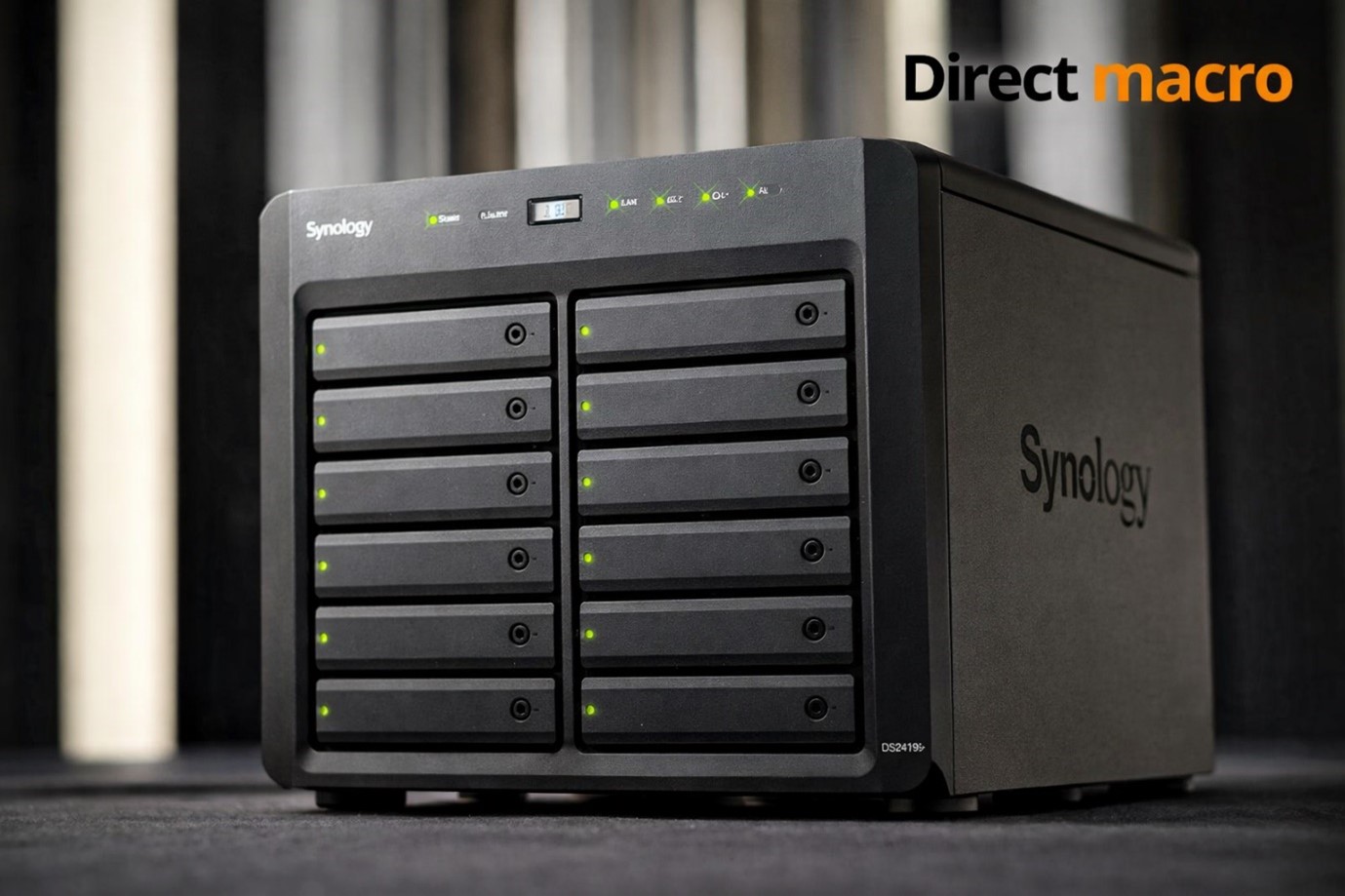DDR4 Vs DDR5 RAM- Which is the Suitable Choice for Your PC?
When you are upgrading your computer, selecting the right components can make all the right differences in the best performance. While many people focus on the CPU and GPU, DDR4 and DDR5 (RAM) are essential in deciding how fast your system runs. With the recent release of DDR5 RAM, there has been much discussion about whether it is worth upgrading from DDR4 RAM. In this blog, we will explain both types of RAM, compare them, and help you decide the best PC RAM for your needs.
What is DDR?

Let’s discuss DDR first before comparing DDR4 vs DDR5. DDR stands for Double Data Rate. This term refers to a type of computer memory that can transfer data twice during each clock cycle. Knowing that a clock cycle is when a computer’s central processing unit (CPU) completes one operation might help you understand this. Transferring data twice during each clock cycle allows DDR memory to move more information in a given amount of time compared to Single Data Rate (SDR) memory, which only transfers data once per clock cycle.
This increased speed allows computers with DDR memory to perform tasks faster and more efficiently than those using SDR memory. In other words, DDR memory helps improve a computer’s overall performance by enabling it to process more significant amounts of data quickly.
What is DDR4?

The fourth generation of synchronous active random-access memory (SDRAM) with double data rate is called DDR4. It replaced DDR3 when it was first released in 2014 and has several advantages over that technology. These have improved reliability, greater capacity, reduced power consumption, and higher transfer rates. Its modules can have a frequency range of 2133MHz to 3200MHz, although some of the fastest ddr4 RAM have a higher maximum. So, If you’re a casual gamer or a content creator, you can be both, then this How to Pick the Best DDR4 RAM for Gaming in 2024: A Gamer’s Guide can be of help.
What is DDR5?

The newest generation of SDRAM, known as DDR5 or memory RAM DDR5, was revealed in 2020. It offers even faster speeds, larger capacities, and increased efficiency, improving its characteristics and capabilities. While future iterations allow speeds as high as 8400MHz, the standard DDR5 speed ranges from 4800MHz to 6400MHz. It also supports higher-density modules, allowing the installation of more memory on a single stick. It is the best RAM for a gaming PC.
The Difference Between DDR4 and DDR5?
DDR4 RAM and DDR5 RAM are two different computer memory versions with different features. One significant difference is speed, where DDR 5 RAM is significantly faster than DDR4. This enhanced speed benefits requiring applications such as scientific simulations, video editing, and gaming, which require high memory bandwidth.
Additionally, DDR5 RAM supports higher-density modules than DDR4, enabling users to add more memory while occupying minimal physical space. Another significant variation lies in power consumption; although DDR4 uses less power than earlier generations, DDR5 RAM decreases power utilization by approximately 30%, providing greater energy efficiency and extending laptop battery life.
Lastly, DDR5 includes
- Innovative features like Decision Feedback Equalization (DFE) technology.
- Improving signal quality and minimizing interference.
- Leading to reduced errors and increased stability during system operation.
Attribute Differences in DDR5 vs DDR4
| Attribute
|
DDR4
|
DDR5
|
|---|---|---|
| Electricity Value | Requires 1.2 volts | Functions at 1.1 volts |
| Transfer Speeds | Reaches up to 3200 MT/s | Starts at 6400 MT/s |
| Module Volume | Limits to 64 GB | Target 128 GB |
| Information Throughput | Attains 25.6 GB/s | Begins at 51.2 GB/s |
| Wattage Utilization | Lower than DDR3 but | Drastically decreases |
| Market Availability | Commonplace | Gradually emerging |
Advantages and Disadvantages of DDR4 and DDR5
Now that we have discussed the main differences between DDR4 and DDR5, let’s settle the question many people ask. Is DDR5 better than DDR4? We will do this, by discussing their advantages and disadvantages.
DDR4 and DDR5 are both types of computer memory used to temporarily store data while it is being processed by the central processing unit (CPU). They differ mostly in terms of speed, capacity, and power consumption.
Advantages of DDR4
- Improved Performance Compared to DDR3
It has faster transfer rates and lower latency than its predecessor, DDR3, resulting in improved system performance and the transformation of the best DDR4 RAM.
- Lower Power Consumption
DDR4 uses less electricity than DDR3, which helps reduce energy costs and extend laptop battery life.
- Increased Capacity
It supports higher module densities, allowing for more significant computer memory capacities. This can improve multitasking abilities and allow for more efficient handling of larger applications or datasets.
- Better Reliability
It has built-in features such as temperature sensing and voltage monitoring, which help prevent overheating and ensure stable operation. Reduced noise levels also improve signal integrity. DRR4 was also the fastest RAM before DDR5.
Disadvantages of DDR4
- Slower Than DDR5
Although DDR4 is an improvement over DDR3, it is still slower than DDR5, which offers even faster transfer rates and lower latencies. And now, DDR5 RAM is known as the fastest RAM.
- Limited Density Options
While DDR4 does support higher module densities than DDR3, there are currently fewer high-density DDR4 modules available on the market, limiting the maximum amount of memory that can be installed in some systems.
Advantages of DDR5
- Faster Speeds Than DDR4
It has significantly speedier transfer rates and lower latencies than DDR4 RAM, providing a noticeable boost in system performance.
- Higher-density Modules
It supports much higher module densities than DDR4 RAM, allowing computers to have even greater overall memory capacities. This will enable more efficient handling of larger applications or datasets.
- Lower Power Consumption
Despite having higher clock speeds, DDR5 RAM consumes less power than DDR4 RAM, thanks to improvements in efficiency.
- Enhanced Error Correction and Stability
It contains advanced error detection and correction mechanisms, improving system stability and reducing the risk of crashes or errors.
Disadvantages of DDR5
- More Expensive Than DDR4
Due to its newer technology, it is generally more expensive than DDR4. However, prices are expected to come down as production volumes increase.
- Compatibility Issues With Older Systems
Since DDR5 RAM requires new hardware components such as memory controllers and motherboards, it may not work with existing systems designed for earlier generations of memory.
- May Require BIOS Updates
To use DDR5 RAM, users may need to update their system’s Basic Input Output System (BIOS), which could be a complex process requiring technical expertise.
Read More: Understanding Computer Memory: Types of Memory and Their Functions
Which is most Suitable for your PC?
Deciding which type of RAM best suits your PC depends on various factors, such as budget, intended use case, and compatibility. If you are looking for the fastest possible speeds and highest densities available, then DDR5 RAM would be the better option. However, if you are working within a tight budget or have a system that only supports DDR4, then sticking with DDR4 might be the better option.
Additionally, consider the specific requirements of your workload. For example, if you primarily engage in activities like web browsing, office productivity, and light multitasking, then DDR4 should be enough. On the other hand, if you frequently edit videos, play demanding games, or perform complex calculations, then investing in the best DDR5 RAM for gaming could provide noticeable benefits.
FAQ’s
Is DDR5 RAM worth it?
Answer: Absolutely, DDR5 RAM provides significantly faster speeds and enhanced capabilities compared to DDR4, making it an excellent choice if cost and accessibility aren’t issues.
Can you put DDR4 RAM in place of DDR5 RAM?
Answer: Regrettably, no. DDR5 RAM requires a DDR5-compatible motherboard and CPU, otherwise, it won’t work.
Can I use DDR4 RAM in a DDR5 RAM slot?
Answer: Not advisable. Due to differing pin configurations and voltage requirements, inserting DDR4 RAM into a DDR5 slot could lead to severe damage.
How much faster is DDR5 than DDR4?
Answer: Expect around 2x-3x the speed of DDR4 and overall improvements thanks to broader bandwidth. Nevertheless, specific distinctions might emerge based on various situations and accompanying hardware elements.
In the Final Analysis
When comparing DDR4 vs. DDR5 RAM, it’s clear that DDR5 RAM offers excellent performance and efficiency compared to its predecessor. Its faster speeds, higher densities, and reduced power consumption make it an attractive upgrade for those seeking maximum computing horsepower. However, the best DDR4 RAM remains a solid choice for budget-conscious consumers and those whose workloads don’t require top-of-the-line hardware. Ultimately, carefully considering your needs and constraints will ensure you choose the right RAM for your PC.
Please, feel free to explore Direct Macro for everything that is related to computer memory including RAM and different types of memory like server, desktops, gaming, etc.
Do you need advice on buying or selling hardware? Fill out the form and we will return.

Sales & Support
(855) 483-7810
We respond within 48 hours on all weekdays
Opening hours
Monday to thursday: 08.30-16.30
Friday: 08.30-15.30








